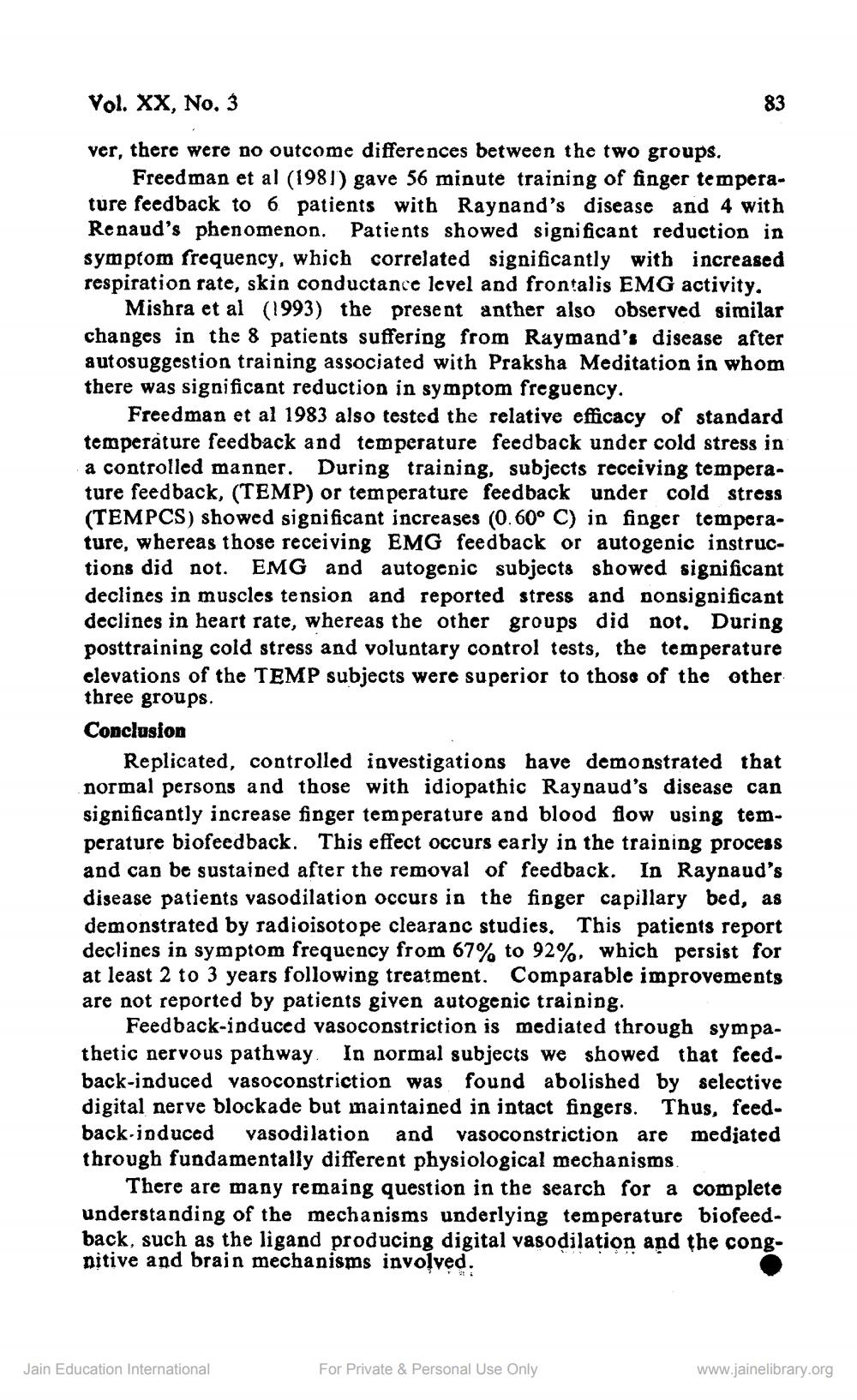________________
Vol. XX, No. 3
ver, there were no outcome differences between the two groups.
Freedman et al (1981) gave 56 minute training of finger temperature feedback to 6 patients with Raynand's disease and 4 with
ud's phenomenon. Patients showed significant reduction in symptom frequency, which correlated significantly with increased respiration rate, skin conductance level and frontalis EMG activity,
Mishra et al (1993) the present anther also observed similar changes in the 8 patients suffering from Raymand's disease after autosuggestion training associated with Praksha Meditation in whom there was significant reduction in symptom freguency.
Freedman et al 1983 also tested the relative efficacy of standard temperature feedback and temperature feedback under cold stress in a controlled manner. During training, subjects receiving temperature feedback, (TEMP) or temperature feedback under cold stress (TEMPCS) showed significant increases (0.60° C) in finger temperature, whereas those receiving EMG feedback or autogenic instructions did not. EMG and autogenic subjects showed significant declines in muscles tension and reported stress and nonsignificant declines in heart rate, whereas the other groups did not. During posttraining cold stress and voluntary control tests, the temperature elevations of the TEMP subjects were superior to those of the other three groups, Conclusion
Replicated, controlled investigations have demonstrated that normal persons and those with idiopathic Raynaud's disease can significantly increase finger temperature and blood flow using temperature biofeedback. This effect occurs early in the training process and can be sustained after the removal of feedback. In Raynaud's disease patients vasodilation occurs in the finger capillary bed, as demonstrated by radioisotope clearanc studies. This patients report declines in symptom frequency from 67% to 92%, which persist for at least 2 to 3 years following treatment. Comparable improvements are not reported by patients given autogenic training.
Feedback-induced vasoconstriction is mediated through sympathetic nervous pathway. In normal subjects we showed that feedback-induced vasoconstriction was found abolished by selective digital nerve blockade but inaintained in intact fingers. Thus, feed. back-induced vasodilation and vasoconstriction are mediated through fundamentally different physiological mechanisms.
There are many remaing question in the search for a complete understanding of the mechanisms underlying temperature biofeedback, such as the ligand producing digital vasodilation and nitive and brain mechanisms involved.
Jain Education International
For Private & Personal Use Only
www.jainelibrary.org




